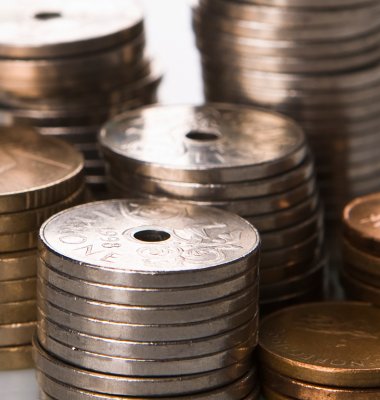Prices within extraction of crude oil and natural gas fell 8.3 per cent in January and thus contributed to the fall in producer prices. Now the producer prices for energy goods are 24 per cent lower than in January 2023. One of the main contributors to this price decrease was the fall in gas prices that took place within the first half of 2023. Producer prices for electricity, gas and steam also decreased in January, however the decrease was only at 1 per cent. The producer prices for energy goods have a large effect on the producer price index, meaning that price movements mentioned above are the main contributors to the decreased producer price index in January. Now the producer price index is at the same level as the fall of 2021.
Manufacturing prices move in both directions
After a price decrease in December, the producer prices for manufacturing are now increasing in January. Prices within the manufacturing industry increased 1.3 per cent from December 2023 to January 2024, for the manufacturing industry, this monthly change is relatively high. From January 2023 to January 2024 the prices within the manufacturing have increased 2.8 per cent.
– The increased prices we see within the manufacturing industry are not due to unambiguous growth, but rather a mix of price increases and decreases within the manufacturing industry, says Espen Kristiansen, section head at Statistics Norway.
The chemical industry, one of the industries within the manufacturing industry, experienced growth this January, the producer prices for chemical goods increased 16.7 per cent. During the fall of 2023 prices for chemical goods have both increased and decreased. Despite the price increase this January, the twelve-month change is 6.8 per cent lower than the price level in January last year.
Producer prices within the food industry remained unchanged throughout January. This is also due to price movements in both directions within the industry.
Prices within refined petroleum products went down 3.9 per cent in January. Furthermore, if we exclude prices within refined petroleum products from the manufacturing industry, the produces prices in the manufacturing industry would have increased with 1.8 per cent¹ in January.
¹ The figure was corrected from 1.9 per cent at 11.55 am on 9 February 2024.
Updated weights for 2024
The PPI is calculated as a weighted mean of price changes. For the PPI to best reflect the structure of the Norwegian industry, the The weights are calculated based on the production and export values from the latest finalized national accounts. To ensure the basis of weights being as actual as possible, the production values on more aggregated levels are based on estimates from quarterly national accounts. This results in the basis of the weights will always be referenced by the year before the index period. are updated each year. The new weights take effect from January.
PPI measures the development in prices on quarrying and extraction, including related services, manufacturing, electricity, gas and steam and water supply. A price fall on In PPI, the energy goods are made up by the indices for extraction of coal, crude oil and natural gas, manufacturing of refined coal and petroleum products and electricity, gas and steam from 2022 to 2023 contributed to a lower share of weight on total PPI for energy goods in 2024 compared to 2023. A considerable decline in the value share of extraction of crude oil and natural gas ensures that most other industries have an increased weight share in 2024 compared to last year. The weights on extraction of crude oil and natural gas accounted for 44.8 per cent of total PPI in 2024, a decrease from 2023, where these weights accounted for about 57.5 per cent. It is a considerable drop in the weight share of natural gas which leads to a lower weight share for crude oil and natural gas combined.
Manufacturing accounts for 44.1 per cent of the weight for total PPI in 2024, which is an increase from last year’s weight of 32.9 per cent. The industries with the largest weight in 2024 are food products 12.1 per cent), refined petroleum products (4.7 per cent), chemical industry (3.4 per cent) and basic metals (4.0 per cent) and machine repair and installation (3.6 per cent).
In Norway, production and distribution of electricity are the principal part of this group accounts for 5.6 per cent of total PPI in 2024. This is small drop from 2023 when the weight was 5.8 per cent. A significant fall in price of electricity from 2022 to 2023, contributed heavily to the lower weight share.
